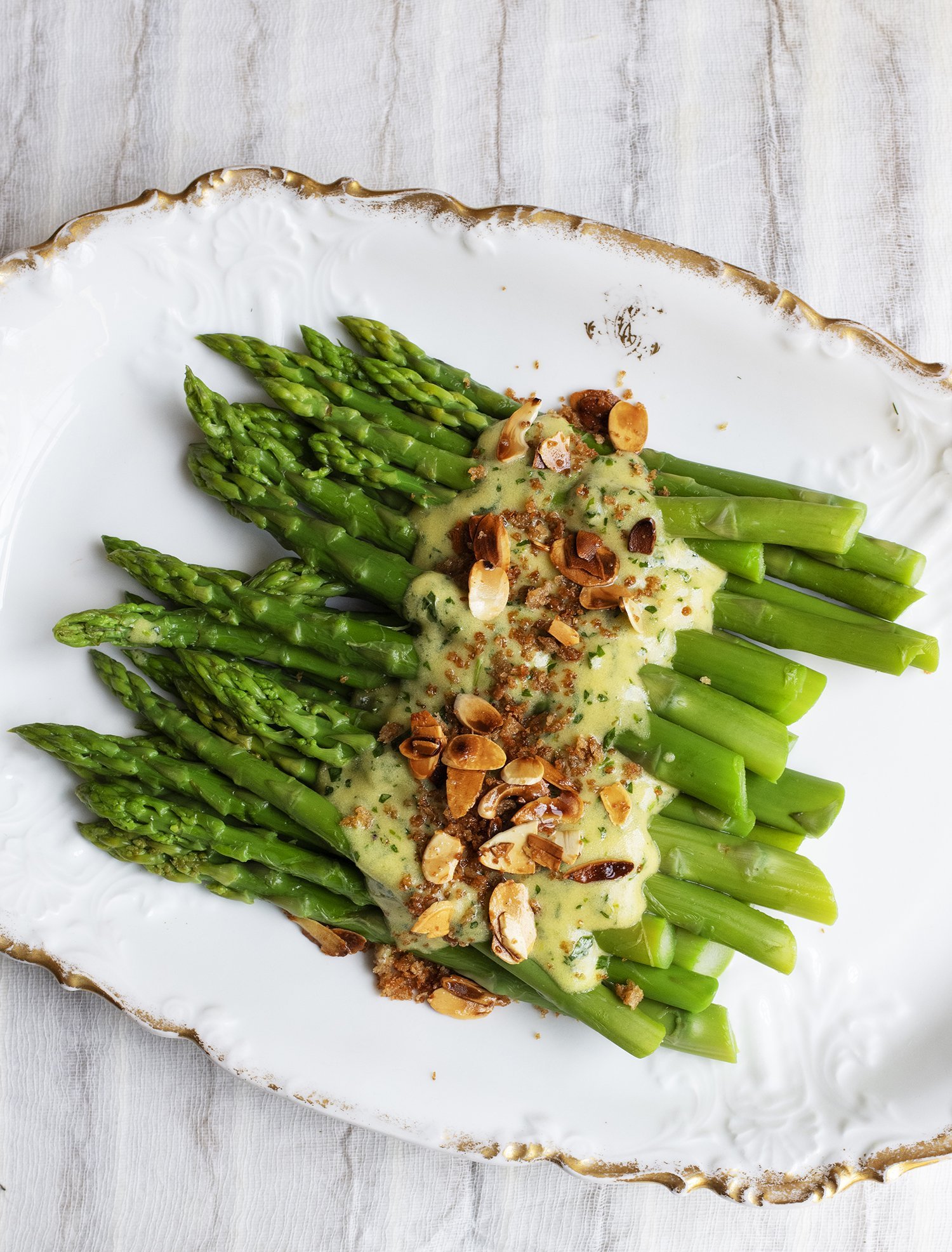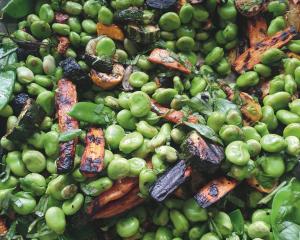
The first asparagus of the year tends to take me by surprise, and this year was no exception. Deep mossy green, their tips tight and tinged with violet, they were wrapped in paper like a bouquet of flowers. They were also laughably expensive, so I left them for others and waited a week or two.
The first I bought were too thin to pick up with our fingers, but had a fine flavour. I sliced them into short pieces and tossed them into a pilau with brown rice, spring onions and pistachios.
They make an interesting filling for a tart, too, the stems lightly cooked and roughly chopped, then suspended in a deep layer of egg custard, like the one you might make for quiche Lorraine. A handful of chopped mint and perhaps some shreds of fried pancetta wouldn’t go amiss.
As the asparagus season comes into full swing, it must be remembered to cut or snap — never pull — and slice as near to the crown as possible. Those lucky enough to have a few crowns at home will know to leave the last few spears in place. Picking every last stalk will weaken the crown beneath. You will be rewarded with a handful of feathery fronds beautiful enough to grace a buttonhole at a wedding.
It is almost impossible to better the classic Hollandaise butter-and-egg sauce to accompany a plate of asparagus. It isn’t as capricious as you might think if you remember to never let it get too hot. Should the sauce show any sign of curdling, add a dash of hot water and whisk like crazy (usually works). I would gild that particular lily with nothing more than a spoonful of finely chopped tarragon.
As well as the classics of which I never tire, there is always room to play a little. This year, I made a thick, mustardy dressing with tarragon and vinegar and it worked a treat, adding texture with crisp breadcrumbs and toasted almonds.
Top tips: a smooth mustardy tarragon sauce and crisp almond crumbs are a perfect match for fresh, new-season asparagus
If you have thick "jumbo" spears with white ends (and probably spent more than is strictly necessary), then peeling the cut ends of each one takes but 5 minutes and shows you care. It is not necessary with anything thinner, in fact, it would be a waste of fine asparagus.
Asparagus, tarragon sauce, almond crumbs
Serves 2. Ready in 15 minutes.
12 medium asparagus spears
75g white bread
15g flaked almonds
40g butter
For the sauce
8g tarragon leaves
2 Tbsp white wine vinegar
2 tsp Dijon mustard
6 Tbsp olive oil
Method
Bring a large pan of water to the boil and salt it lightly.
Reduce the bread to crumbs in a food processor or with a coarse grater. Warm a shallow pan over a moderate heat, add the flaked almonds and toast until light brown.
Tip the almonds out on to a plate, then add the butter to the pan, leave it to melt, then stir in the breadcrumbs and leave until they turn golden. Stir in the toasted almonds and set aside.
Cook the asparagus in the boiling water. The time will depend on the thickness of your spears. For spears of medium thickness, allow about 7 minutes, testing for tenderness with the point of a knife or metal skewer.
While the asparagus cooks, put the tarragon leaves in a blender. Pour in the white wine vinegar, add the Dijon mustard, then the olive oil and 1 tbsp of water, blend to a thickish dressing. Season with a little salt and pepper, give it a taste and add more vinegar if you like a sharper dressing, then set aside.
Carefully lift the spears from the boiling water. This is best done with tongs. Drain briefly on kitchen paper, then place them on a serving dish. Spoon over the tarragon sauce and scatter with the almond crumbs.

A few quick dressings for your asparagus
• Season the cooked asparagus with a squeeze of lemon juice and a sprinkling of grated parmesan.
• Make a quick tomato sauce by grilling a handful of ripe tomatoes, then crushing them with a fork and seasoning with salt, pepper and a splash of red wine vinegar. Use it as a dip for the spears.
• Chop several rashers of bacon, fry them until crisp, then tip them and, most crucially, their fat, over the cooked spears.
• Roast the asparagus in a single layer with a little olive oil. Pile them on to plates and place a soft, fresh goats’ cheese on top. Let it ooze and melt over the stems. — The Observer












